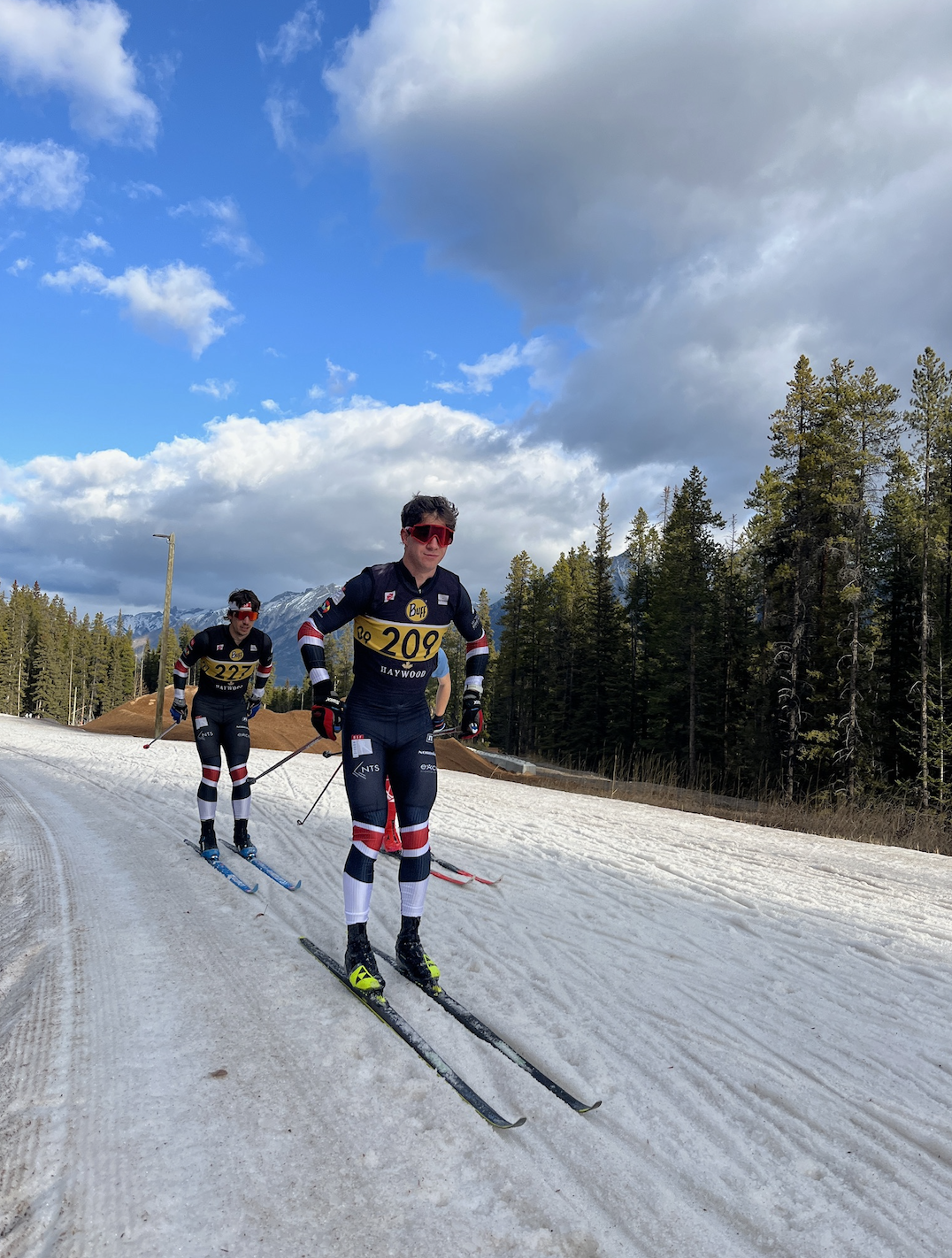

Hello!
BSF Pro Team (plus a few speedy PGs) are almost done with our on snow camp in Alberta, Canada. We were able to ski on preserved snow from November 4th to the 12th, just in time to prepare for the first races in December.
Rollerskiing into November and even December is not the most enjoyable; we are antsy to get on snow and we know we will have to be sharp on snow for important races in less than a month. Canmore, Alberta, is our favorite place to catch early snow during the fall. This week our team has been training on Frozen Thunder, a loop built entirely from snow saved from the year prior.
How it works
Each spring, when the racing season wraps up, the Canmore Nordic Centre piles up massive mounds of dense, machine made, and natural snow. In April, these piles are then covered in woodchips and sawdust (a surprisingly effective natural insulation) that slows melting and keeps the snow frozen through summer. By October, crews start peeling back the sawdust layers and spreading the snow across a 2–4 km loop. A few days of grooming later, Frozen Thunder comes to life.
A Bit of History
This project began around 2009 as a collaboration between the Canmore Nordic Centre, Nordiq Canada, Biathlon Canada, and local organizers. Since then, it has become a cornerstone of North American preseason training, attracting national teams, World Cup athletes, and development skiers from across the continent.
But CNC isn’t alone; the idea of storing snow for early-season use, often called snow-farming, has been gaining traction around the world (a few popular areas):
● Craftsbury Outdoor Center – occasionally stores snow for early skiing ● Vålådalen, Sweden – opened October 18th
● Idre Fjäll, Sweden – opened October 17th
● Ramsau, Austria – has reliable October skiing
● Levi, Finland – opened a loop on October 11th
● Livigno, Italy – opened its early-season loop last month

Why This Matters
Getting on snow early is a game-changer for technique. It’s the perfect time to make adjustments, to find rhythm, glide, and balance on real snow.
From a logistical view, having access to snow when others are still waiting gives us a head start, and maybe even brings us into the season with some extra confidence knowing we have had more time on snow. Farming snow also demonstrates how skiing as a sport is adapting to changing winters, pushing for longer seasons, and helping skiers perform earlier in the season.
As our team heads back south after this year’s camp, we’re looking into Bozeman’s forecast, waiting to get some snow of our own.
See you on the trails,
Emma